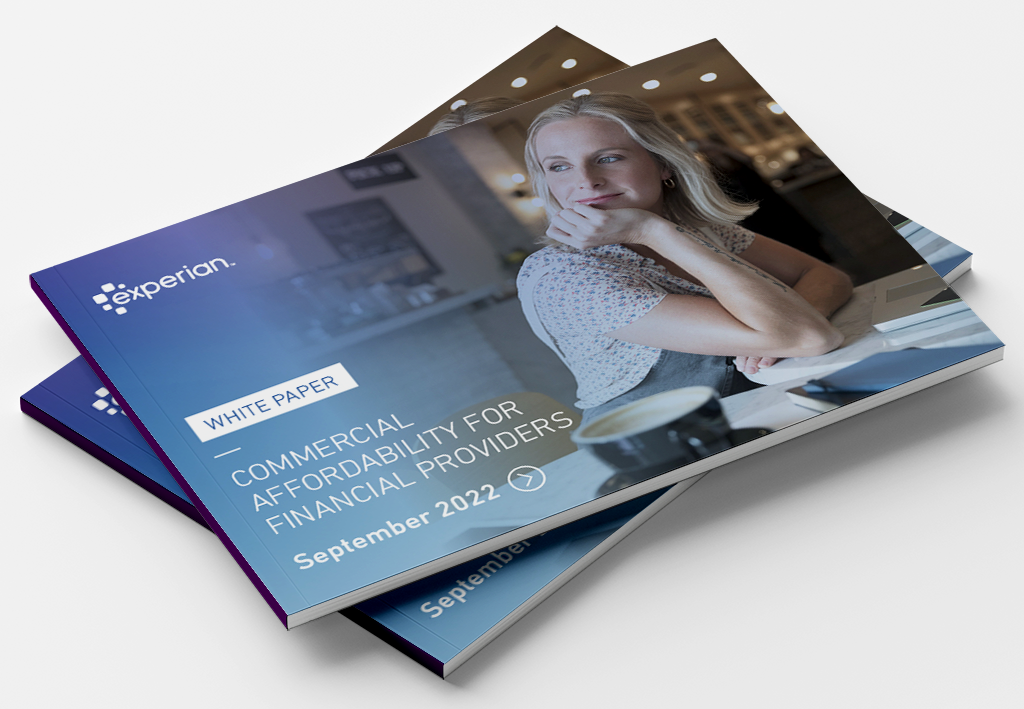Seeing the full picture in commercial affordability
For commercial lenders, assessing affordability is more challenging than ever due to soaring inflation, rising interest rates, high energy costs and a range of other factors.
To ensure that business customers are resilient in terms of their ability to pay, lenders need a ‘full picture’ view of commercial affordability based on comprehensive data, advanced analytics, and forward-looking macro-economic forecasts.
Assessing affordability of facilities for commercial customers has always been a significant challenge with multiple, complex factors to consider. As well as accurately assessing a business customer’s turnover, costs, and existing debt obligations, lenders need a clear view of other factors such as asset depreciation, the drawing down of dividends by company directors, and more.
Unfortunately for lenders, though, the current inflationary climate – and in particular factors such as high and rising energy prices and low consumer confidence – are making affordability even more difficult to calculate. Not only that, but unusually volatile ‘cost-of-living‘ and ‘cost of doing business’ factors mean that what’s affordable for commercial customers today may test their resilience and ability to pay over the entire lifetime of a facility.
With this multi-dimensional complexity affecting affordability for businesses of all sizes and all sectors, a highly comprehensive approach is needed to ensure the accuracy and efficacy of credit decisions. This should be based on a ‘full picture’ view of a business’ financial status and resilience based on a granular analysis of all known affordability vectors.
So what does a “full picture” view of affordability look like?
To get a comprehensive view of a business’ current and likely future affordability, lenders need to consider the full range of factors impacting its ability to pay. The most important of these are:
- Business income – when it comes to assessing affordability, the income (or turnover), of the business is a key metric. This should include revenues from the sale of products or services, as well as income from other sources – such as the sale of unused equipment or assets, rental income, interest on savings, grants, or others. Critically, affordability assessments should assess how stable the business’ income is (based on historical analysis of yearly results), and whether seasonality or other external factors typically impact revenues throughout the year, and to what degree.
- Costs – the ability to assess affordability also demands granular analysis of the business’ costs. Fixed costs include monthly rent, utilities bills, insurance, interest on credit facilities, and direct costs relating to product manufacturing, service delivery, and employee wages. Affordability should also consider variable costs, however, including increased staffing costs during seasonal peaks. As well as the total costs of the business, the balance of fixed to variable costs is also a factor in any affordability calculation.
- Existing debt and repayment obligations. To accurately assess affordability, lenders need a detailed view of a business’ financial credit products and repayment obligations. These potentially include loans, overdrafts, asset finance, commercial cards, commercial mortgages, utilities contracts, and more. Data sources now exist to provide a granular view of UK business’ debt obligations in the small and medium-sized enterprises (SME) segment and for larger businesses, providing details on type and duration of facilities, credit limits and balances, and any arrears associated with facilities, including comprehensive payment histories.
- Asset depreciation. Affordability – and a business’ financial situation in general – can be significantly impacted by depreciation, especially in asset-intensive industries where updating equipment and vehicles is essential to efficient operations. For larger businesses, and facilities, depreciation should be factored into affordability decisions to ensure repayment resilience over time.
- Drawings – the sums of money company directors pay themselves in the form of dividends can significantly impact the financial health – or otherwise – of a business. Factoring drawings (dividend payments) into affordability assessments ensures that businesses are solvent and able to make payments through the lifecycle of the product – helping to reduce credit risk.
Why “full picture” affordability is critical: a real-world example
The need for a full picture of commercial affordability was demonstrated recently in a case encountered by Experian. In this example, the prospective customer’s business turnover was equal to around £30 million according to the annual accounts, which were confirmed with Current Account Turnover (CATO) data. However, Credit Account Sharing Information (CAIS) also showed that the company was servicing over £90 million of active debt – all on either three or four-year repayment terms. This sum was understated in the company’s reported liabilities. These insights revealed that the customer’s debt-to-income ratio was over 300% – a particularly worrying figure considering that the average term of the debt was around three years. Finally, the Debt Service Ratio was over 100%, meaning that all of the company’s revenues were required just to support the existing debt repayment obligations. This case demonstrates the critical need for a full picture of affordability before any lending decision is made, showing how access to the right data and insights can prevent significant losses based on fair, timely, accurate affordability assessments.
How can we help?
Experian helps lenders to achieve a ‘full picture’ view of affordability by sourcing and analysing CAIS data, CATO data, Open Banking data, macro-economic forecasts and a range of other relevant data sources, subject to the size and scale of the facility being quested and level of associated risk. As well as bringing together all of these key data sources, we use a categorisation engine to provide granular commercial affordability assessments based on 48 income and expenditure categories – with an accuracy of 90% for automated affordability calculations.
Our economic forecasts take account of all the complex factors currently impacting commercial affordability – from rising interest rates, energy prices, and inflation, to market variables and consumer confidence. In doing so, we help lenders to assess a business’ ability to pay throughout the lifecycle of a facility and minimise credit risks accordingly.










